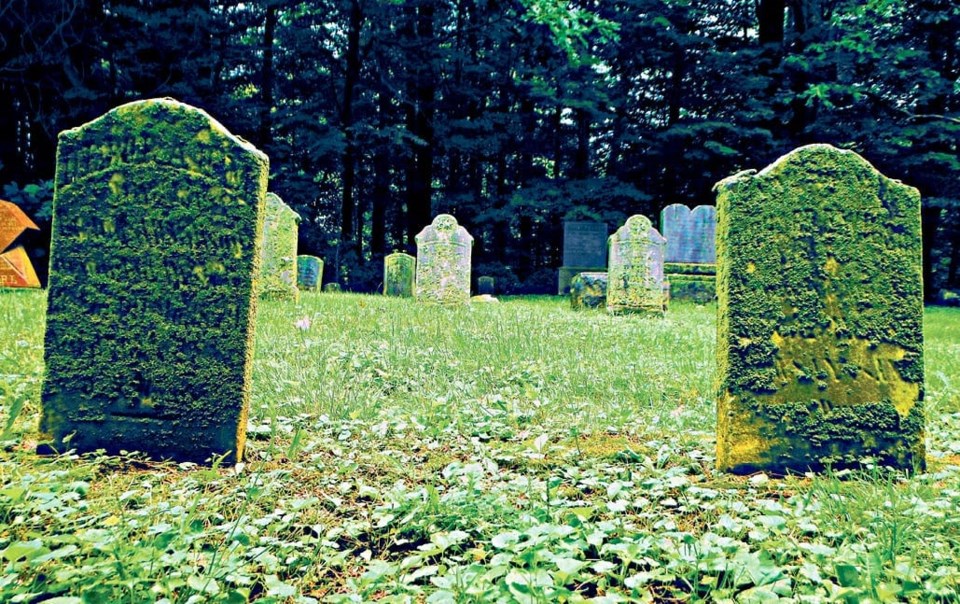Historic Fonthill site a quiet reminder of our past
BY CAROLYN BOTARI Special to the VOICE
At the corner of Welland Road and Effingham Street sits a little cemetery, a lonely reminder of a community that first settled Pelham prior to the 1800s. The Quakers, or Society of Friends, began arriving in Pelham as early as 1786.
They were invited and welcomed to Upper Canada by Lieutenant-Governor General John Graves Simcoe because of their qualities of honesty and hard work, as well as a sense of community, which would be of great benefit to those braving a new life in the wilderness.
A typical Quaker belonged to an extended network of more-or-less closely related families with a strong religious family base. Quite a few unmarried young men migrated, but usually in company with older parents, married sisters and brothers. Movement to the Niagara frontier in these years began what is called a chain-migration, with other family members and former neighbours following the first-comers a few years later.
These new settlers were part of a larger migration from the states of New York, Lancaster and Bucks Counties in Pennsylvania, and New Jersey. Nearly all Friends who came to Niagara had taken no active part in the American Revolution and did not claim to be Loyalists.
The Pelham Society of Friends built their first meeting house in the late 1780s. The original building was a log structure located at the corner of Welland Road and Effingham Street. It was replaced it with a larger frame building in 1807. In 1875 the Friends, now known as the Hicksite Quakers, built a new meeting house or church known as “The White Meeting House” at the same location. This also became the site of one of the earliest burial grounds for Friends.
In 1929, many years after it closed, The White Meeting House was moved to Maple Street in Fenwick where it still stands today. A tablet in the Welland Road cemetery now marks the spot where in the late 1700s the first monthly meeting of the Religious Society of Friends was established in Canada and where the Meeting House once stood.
The Quakers were known for their plainness, and in the earliest Friends’ burial grounds a mere fieldstone or stab of stone or wood, with the initials of the deceased crudely carved thereon, was often the only mark of a loved one lost. The older part of the cemetery, where many of the original stones once marked burials, is located behind the spot where the Meeting House once stood. This spot at first appears to be a vacant area, but a closer look reveals a few partially exposed, inscribed slabs poking out from under the grass.
One stone, bearing the name Page, is dated 1836. Among the early Quaker pioneer families to be found interred here are Willson, Beckett, Chapman, Page and Cohoe to name but a few.
A visit to this jumble of grasses and stones should remind us all that these inscriptions were once carved into our ancestors’ hearts as well as the stones. You may not be able to make out the names or words someone chose to say, but the many random dents in the stones are all connected to personal sorrows of people and families long gone. Sadly many of the original old stones in the cemetery have been tipped over or broken off and now lie flat, a forlorn part of our vanishing history.



